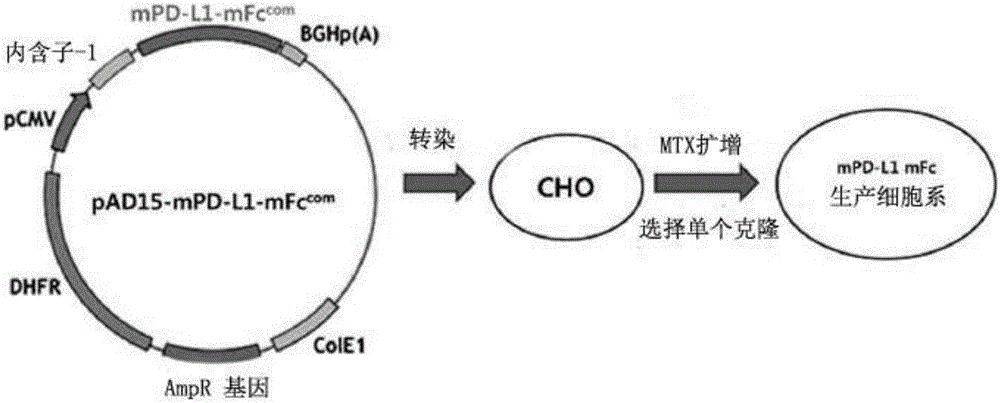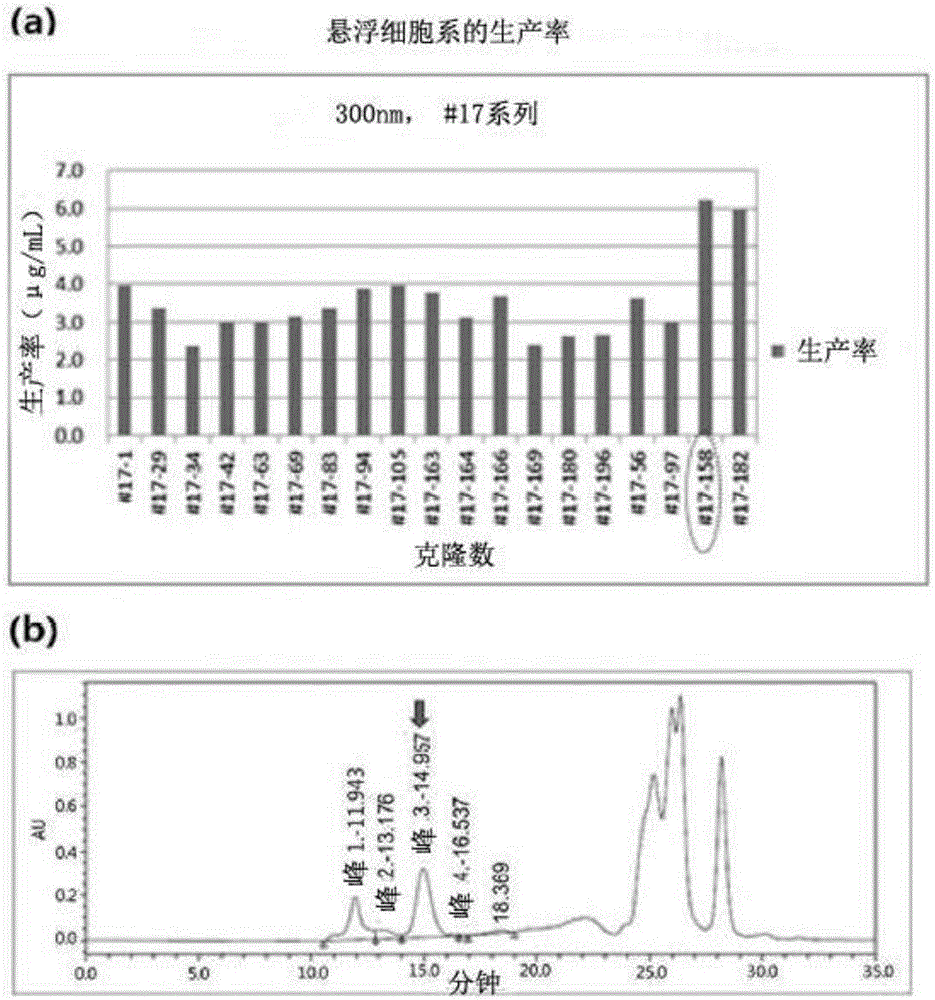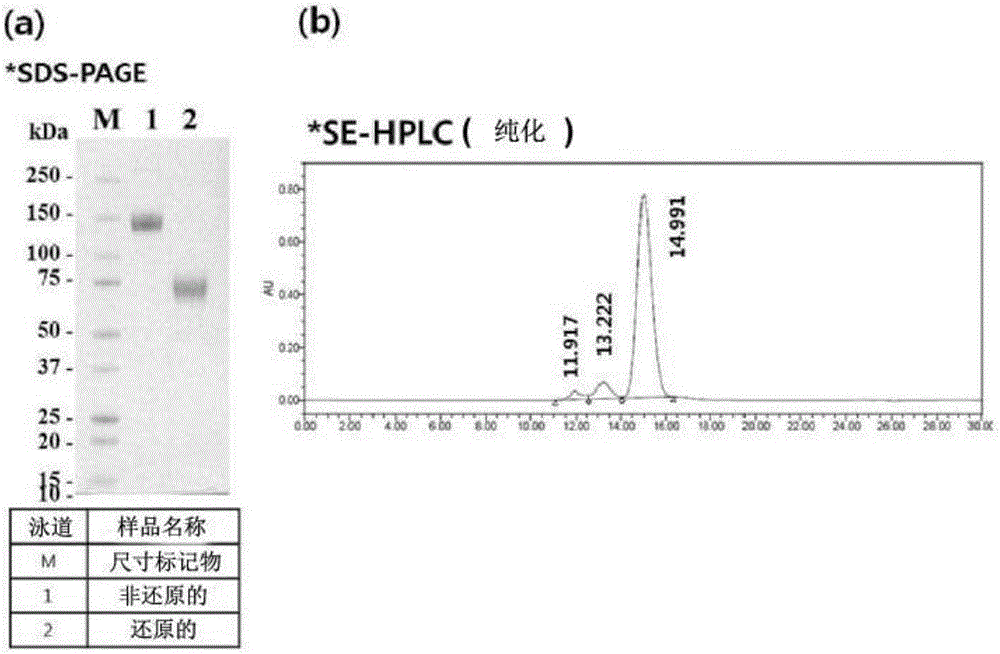Pd-l1 fusion protein and use thereof
A fusion protein, PD-L1 technology, applied in the direction of fusion polypeptides, immunoglobulins, peptide/protein components, etc., to achieve the effect of effective treatment
- Summary
- Abstract
- Description
- Claims
- Application Information
AI Technical Summary
Problems solved by technology
Method used
Image
Examples
Embodiment 1
[0170] Example 1: Preparation of mPD-L1-mFc (mouse PD-L1-mouse non-lytic IgG2a) gene construct
[0171] Mouse PD-L1 protein (mPD-L1) has about 70% sequence homology with human PD-L1 protein (hPD-L1). Therefore, when human PD-L1 protein is repeatedly administered to mice, antibodies against human PD-L1 protein (anti-drug antibody, ADA) may be developed, which may be difficult to predict the accurate therapeutic effect of human PD-L1 protein in some cases.
[0172] Therefore, before using the human PD-L1-Fc fusion protein for experiments, the effect of the mouse PD-L1-Fc fusion protein was analyzed by in vivo experiments in mice. A non-soluble Fc (hereinafter referred to as "mFc") was constructed to provide a gene construct capable of producing mPD-L1-mFc, and a cell line expressing mPD-L1-mFc was constructed. The cell line expressing the recombinant protein was cultured in suspension, and the culture medium was collected, after which the recombinant protein was recovered by co...
Embodiment 2
[0175] Example 2: Production of mPD-L1-mFc protein
[0176] In order to mass-produce mPD-L1-mFc (mouse PD-L1-mouse non-lysed IgG2a) protein (SEQ ID NO: 10), cells produced from the mPD-L1-mFc suspension cell line obtained in Example 1 were Isolate and purify target protein from culture medium.
[0177] To purify the protein, the protein purification process was monitored over time at a UV wavelength of 280 nm. As a result, the elution of the target protein was verified by the peak that appeared when the elution buffer (0.1M glycine, pH 3.0) passed through the protein A resin column ( image 3 ). In addition, the purified mPD-L1-mFc protein was analyzed by SDS-PAGE. As a result, the protein size was about 150 KDa under non-reducing conditions and about 75 KDa under reducing conditions, indicating that mPD-L1-mFc is a homodimer form( image 3 a). In addition, the purified product was analyzed by SE-HPLC to confirm its purity ( image 3 b), and measure the level of impurity...
Embodiment 3
[0178] Example 3: Evaluation of in vitro activity of mPD-L1-mFc protein
[0179] In order to evaluate the activity of the purified mPD-L1-mFc protein (SEQ ID NO: 10) in Example 2, the immunosuppressive effect of the protein was analyzed in vitro using mouse splenocytes.
[0180] Such as Figure 4 As indicated, beads were coated with anti-CD3 and mPD-L1-mFc proteins at a ratio of 1:1 or 1:4. In addition, a 10:1 ratio of beads and mouse splenocytes was used to stimulate splenocytes (5x 10 6 Beads: 5x 10 5 spleen cells).
[0181] Mouse splenocytes were stimulated in microwell plates using microbeads coated with anti-CD3 antibody and mPD-L1-mFc protein. After 48 hours, the expression level of cell proliferation factor Ki-67 in mouse splenocytes was analyzed.
[0182] As a result, mPD-L1-mFc protein was observed to inhibit the proliferation of mouse splenocytes (reduced in Ki-67 expression), suggesting that the mPD-L1-mFc fusion protein has immunosuppressive activity ( Figur...
PUM
 Login to View More
Login to View More Abstract
Description
Claims
Application Information
 Login to View More
Login to View More - R&D
- Intellectual Property
- Life Sciences
- Materials
- Tech Scout
- Unparalleled Data Quality
- Higher Quality Content
- 60% Fewer Hallucinations
Browse by: Latest US Patents, China's latest patents, Technical Efficacy Thesaurus, Application Domain, Technology Topic, Popular Technical Reports.
© 2025 PatSnap. All rights reserved.Legal|Privacy policy|Modern Slavery Act Transparency Statement|Sitemap|About US| Contact US: help@patsnap.com



